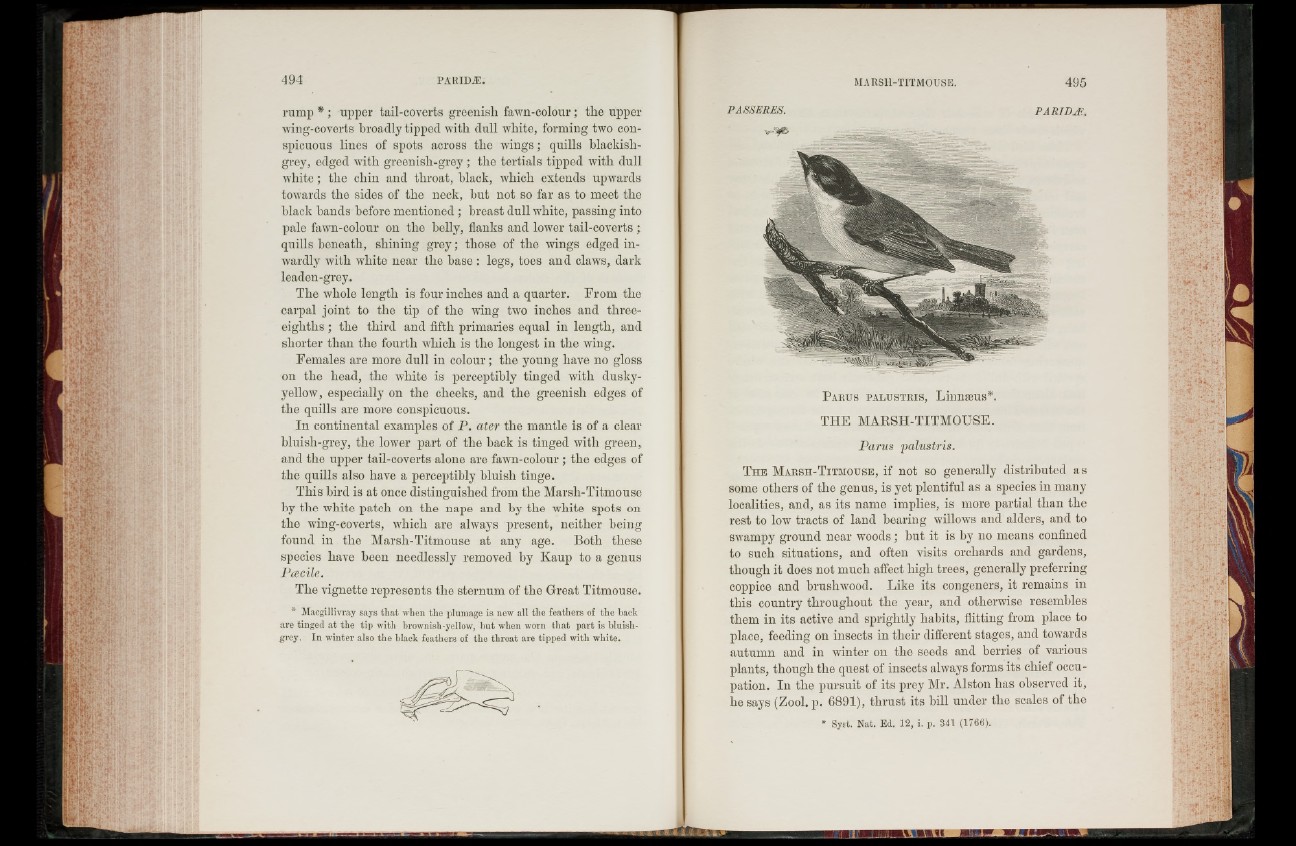
rump * ; upper tail-coverts greenish fawn-colour; the upper
wing-coverts broadly tipped with dull white, forming two conspicuous
lines of spots across the wings; quills blackisli-
grey, edged with greenish-grey ; the tertials tipped with dull
white; the chin and throat, black, which extends upwards
towards the sides of the neck, but not so far as to meet the
black bands before mentioned ; breast dull white, passing into
pale fawn-colour on the belly, flanks and lower tail-coverts ;
quills beneath, shining grey; those of the wings edged inwardly
with white near the base : legs, toes and claws, dark
leaden-grey.
The whole length is four inches and a quarter. From the
carpal joint to the tip of the wing two inches and tliree-
eightlis ; the third and fifth primaries equal in length, and
shorter than the fourth which is the longest in the wing.
Females are more dull in colour; the young have no gloss
on the head, the white is perceptibly tinged with dusky-
yellow, especially on the cheeks, and the greenish edges of
the quills are more conspicuous.
In continental examples of P. ater the mantle is of a clear
bluish-grey, the lower part of the back is tinged with green,
and the upper tail-coverts alone are fawn-colour ; the edges of
the quills also have a perceptibly bluish tinge.
This bird is at once distinguished from the Marsh-Titmouse
by the white patch on the nape and by the white spots on
the wing-eoverts, which are always present, neither being
found in the Marsh-Titmouse at any age. Both these
species have been needlessly removed by Kaup to a genus
Pcecile.
The vignette represents the sternum of the Great Titmouse.
* Macgillivray says that when the plumage is new all the feathers of the hack
are tinged at the tip with brownish-yellow, but when worn that part is bluish-
grey. In winter also the black feathers of the throat are tipped with white.
P aktjs p a l u s t h is , Linnaeus*.
THE MARSH-TITMOUSE.
Parus palustris.
T h e M a k sh - T itm o u s e , if not so generally distributed as
some others of the genus, is yet plentiful as a species in many
localities, and, as its name implies, is more partial than the
rest to low tracts of land bearing willows and alders, and to
swampy ground near woods ; but it is by no means confined
to such situations, and often visits orchards and gardens,
though it does not much affect high trees, generally preferring
coppice and brushwood. Like its congeners, it remains in
this country throughout the year, and otherwise resembles
them in its active and sprightly habits, flitting from place to
place, feeding on insects in their different stages, and towards
autumn and in winter on the seeds and berries of various
plants, though the quest of insects always forms its chief occupation.
In the pursuit of its prey Mr. Alston has observed it,
he says (Zool. p. 6891), thrust its bill under the scales of the
* Syst. Nat. Ed. 12, i. p. 341 (1766).